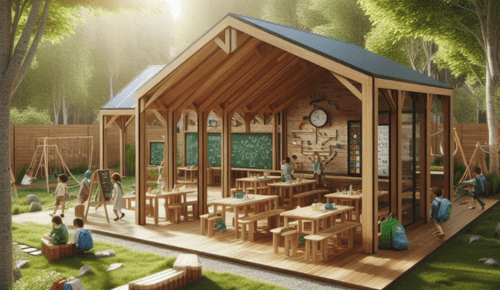In recent years, Mugas (Multi-Use Games Areas) have become a staple in parks, schools, and community centers. Designed to provide a secure and versatile space for sports, they offer a practical solution for local authorities seeking to promote outdoor activity while ensuring safety and accessibility. Whether it’s football, basketball, or hockey, these enclosed areas allow children and young people to enjoy their favorite sports without the common concerns of ball-related accidents or interference with traffic.
What Makes MUGAs a Great Choice?
The popularity of MUGAs is no coincidence. Unlike traditional sports fields that can become unusable due to poor weather, a well-constructed MUGA can be used year-round. Whether installed on tarmac or with impact-absorbing safety surfacing, they provide a stable and safe playing environment, even when a natural grass pitch is too wet or muddy.
One of the biggest advantages of these play areas is their enclosed design. In open fields, stray balls can easily become a hazard—breaking nearby windows, rolling onto roads, or disturbing other park visitors. However, with a fully enclosed MUGA, such risks are minimized, making the space ideal for schools, public parks, and residential communities.
Encouraging Physical Activity for All Ages
A major benefit of MUGAs is their ability to cater to multiple sports and activities. Unlike single-use courts or pitches that limit how they can be used, these multi-functional areas encourage a variety of games, ensuring that people of all ages and interests can get involved. This flexibility is particularly valuable for schools and councils that need cost-effective solutions to promote health and fitness.
Additionally, the structured and enclosed design of a MUGA makes it an excellent tool for reducing anti-social behavior. By providing a designated space for sports and recreation, young people are encouraged to engage in positive activities, fostering a sense of community and teamwork.
Year-Round Use and Low Maintenance
One of the most practical aspects of MUGAs is their durability. Unlike grass fields, which require constant upkeep and can become unplayable in wet conditions, these areas need minimal maintenance. Tarmac and synthetic surfacing options allow for quick drainage and all-weather use, making them a more sustainable investment for local authorities.
For parks and public spaces where maintenance costs are a concern, MUGAs offer a practical alternative to traditional sports pitches. Their enclosed design also reduces littering and vandalism, helping to keep community spaces clean and inviting.
Finding the Right MUGA for Your Community
If you’re looking for a way to enhance your local park, school, or recreational space, MUGAs are a great solution. Whether it’s for football, basketball, hockey, or even other activities like netball or tennis, a well-designed multi-use games area can transform an underused space into a vibrant hub of activity. With options available to suit different budgets and space constraints, installing a MUGA is a long-term investment that benefits communities, promotes active lifestyles, and ensures safe play for generations to come.




